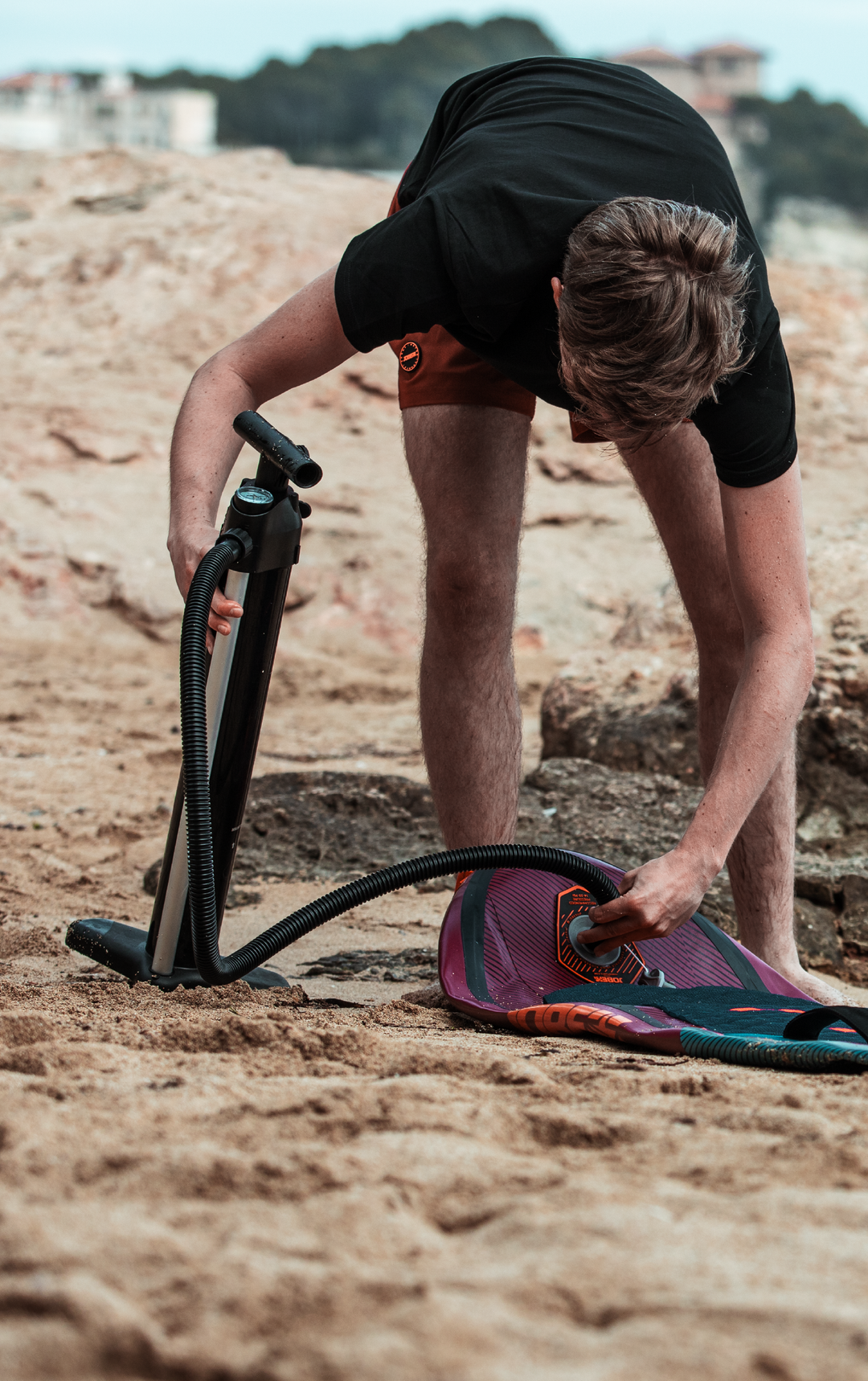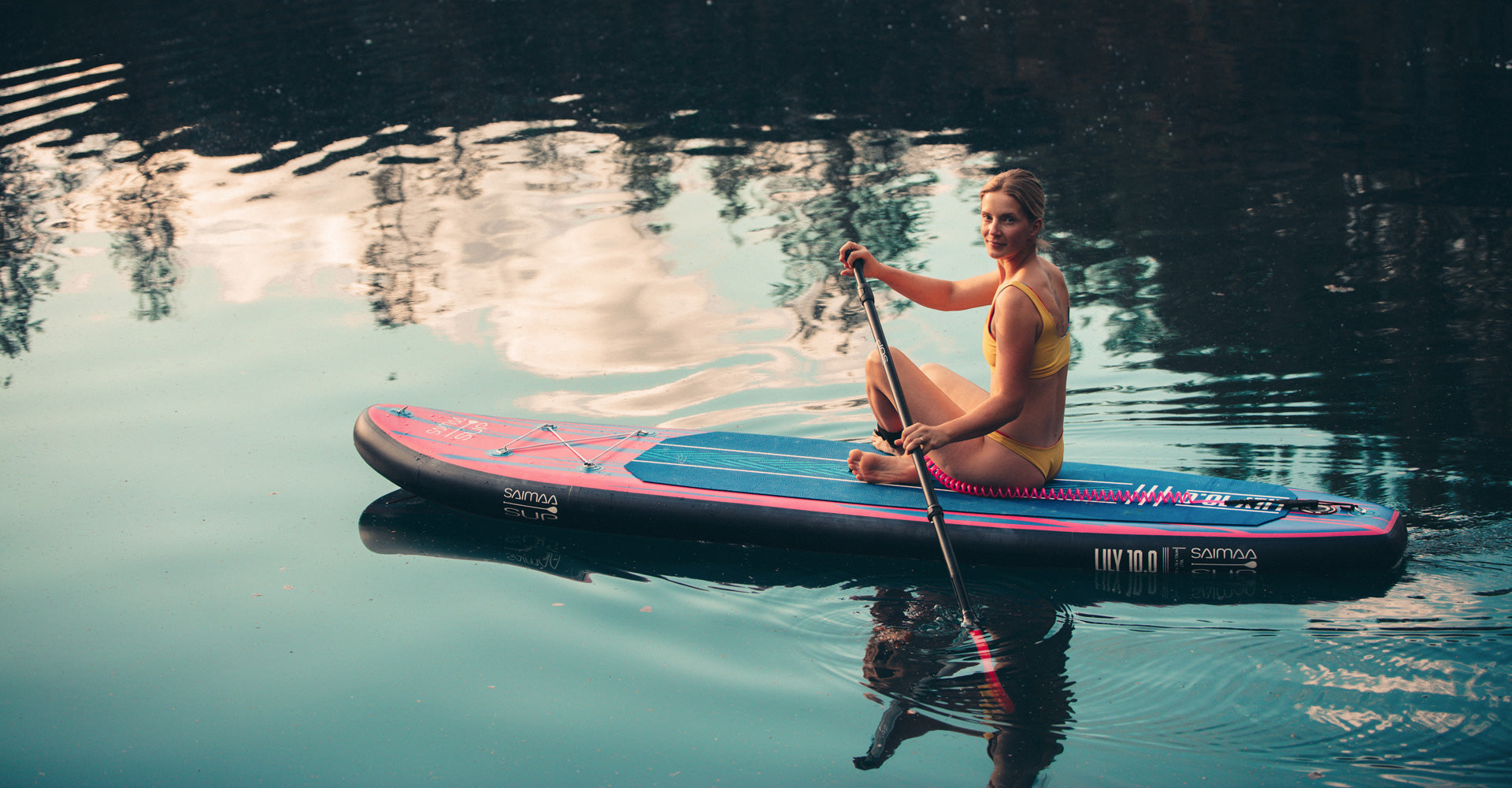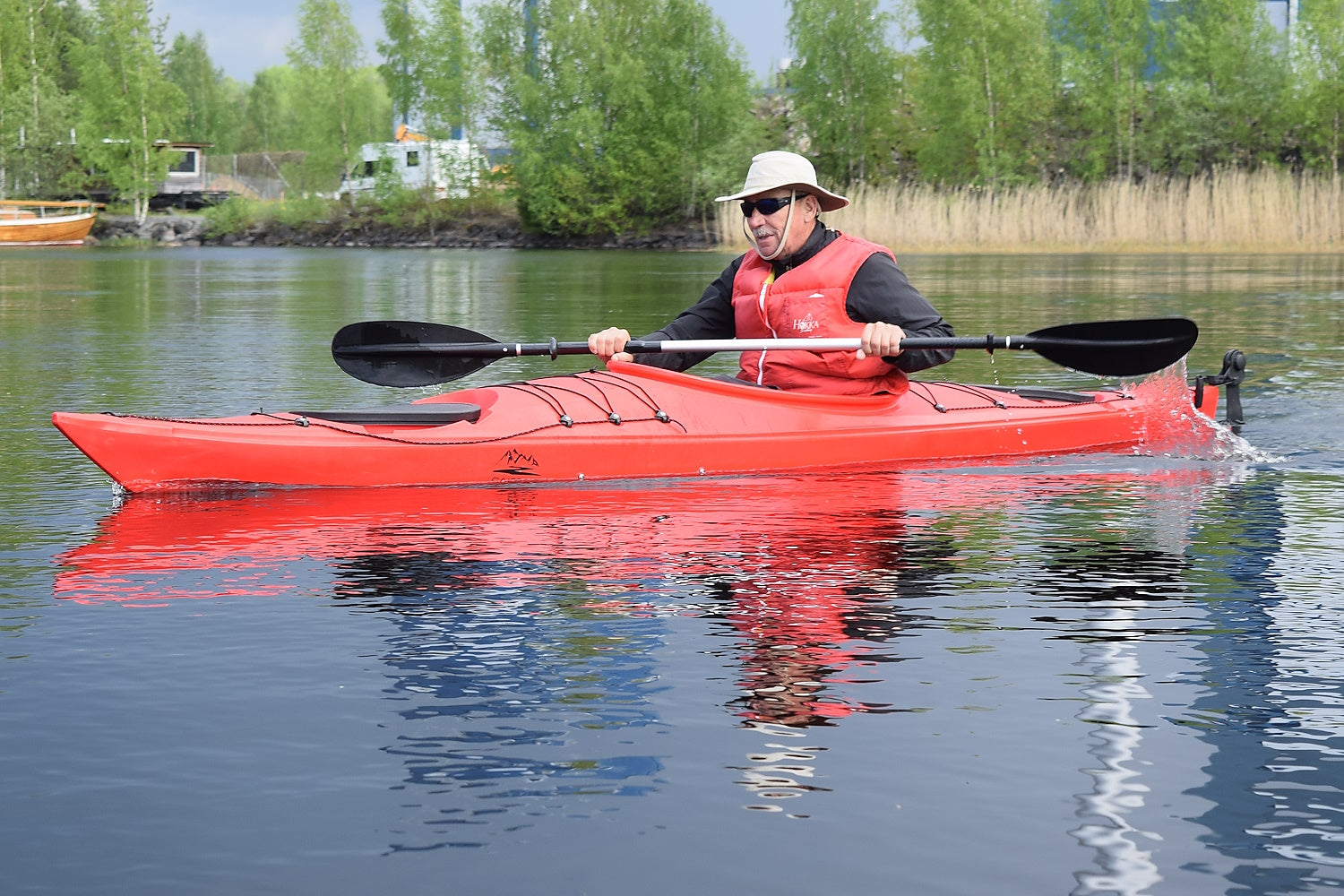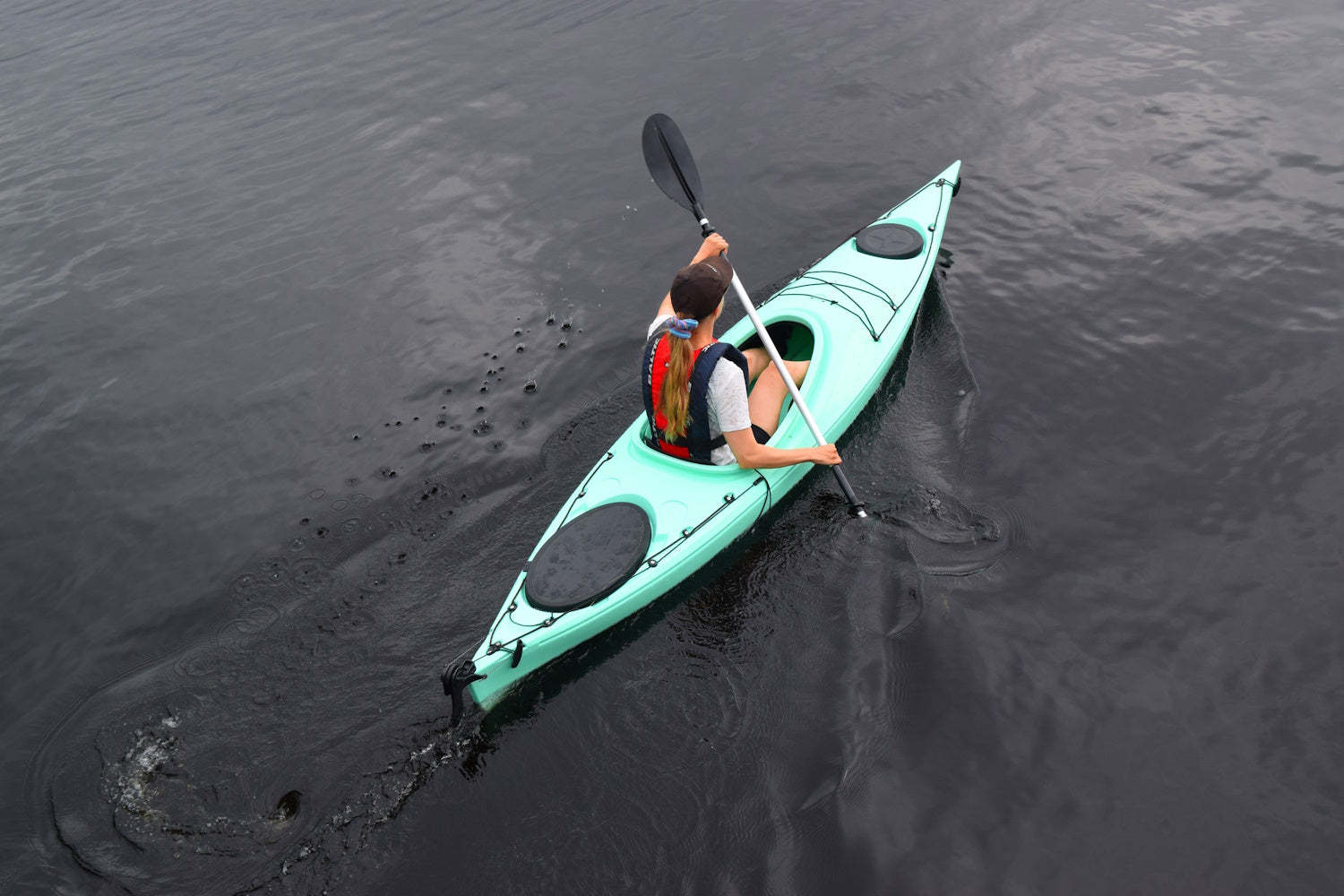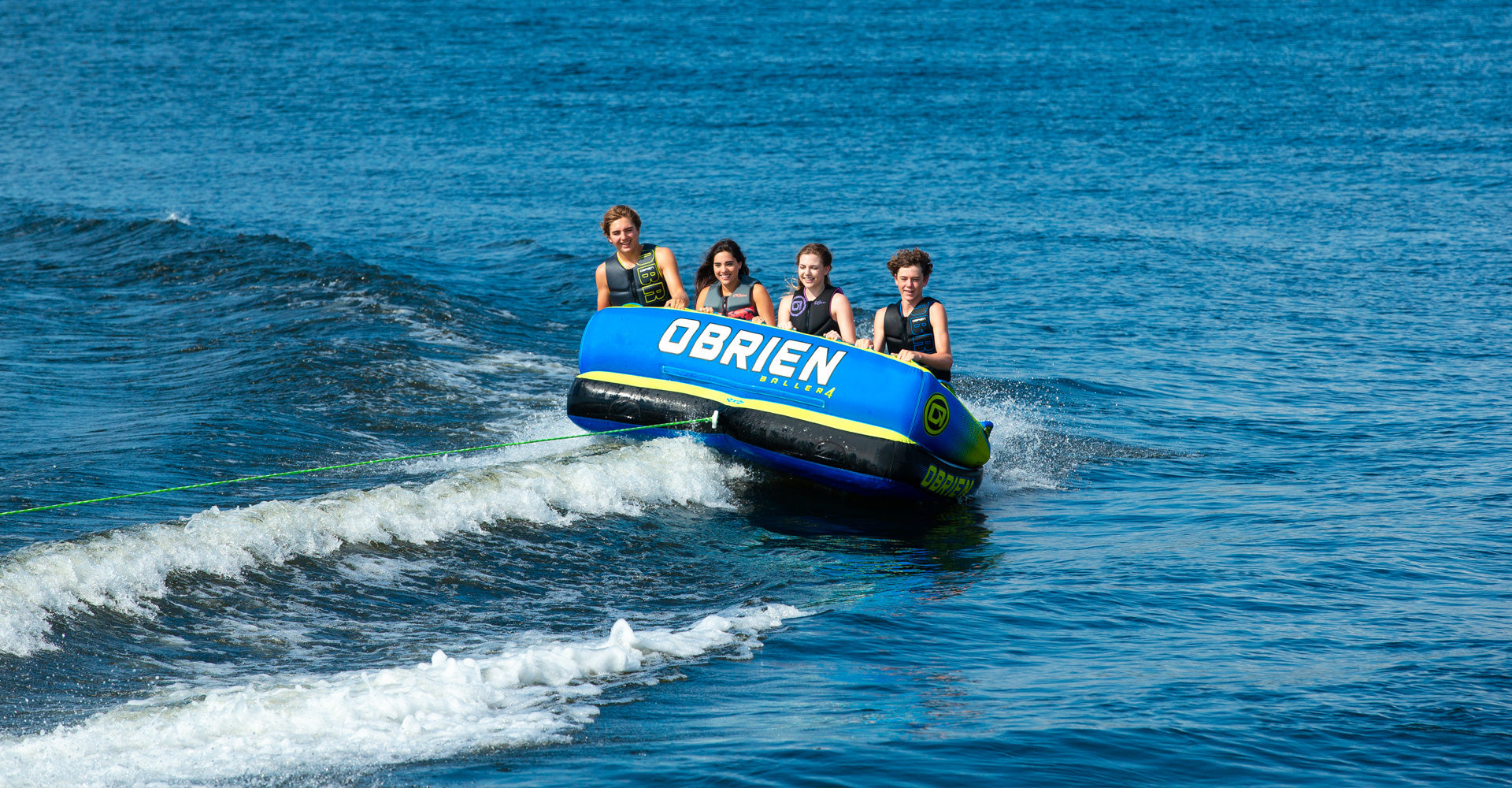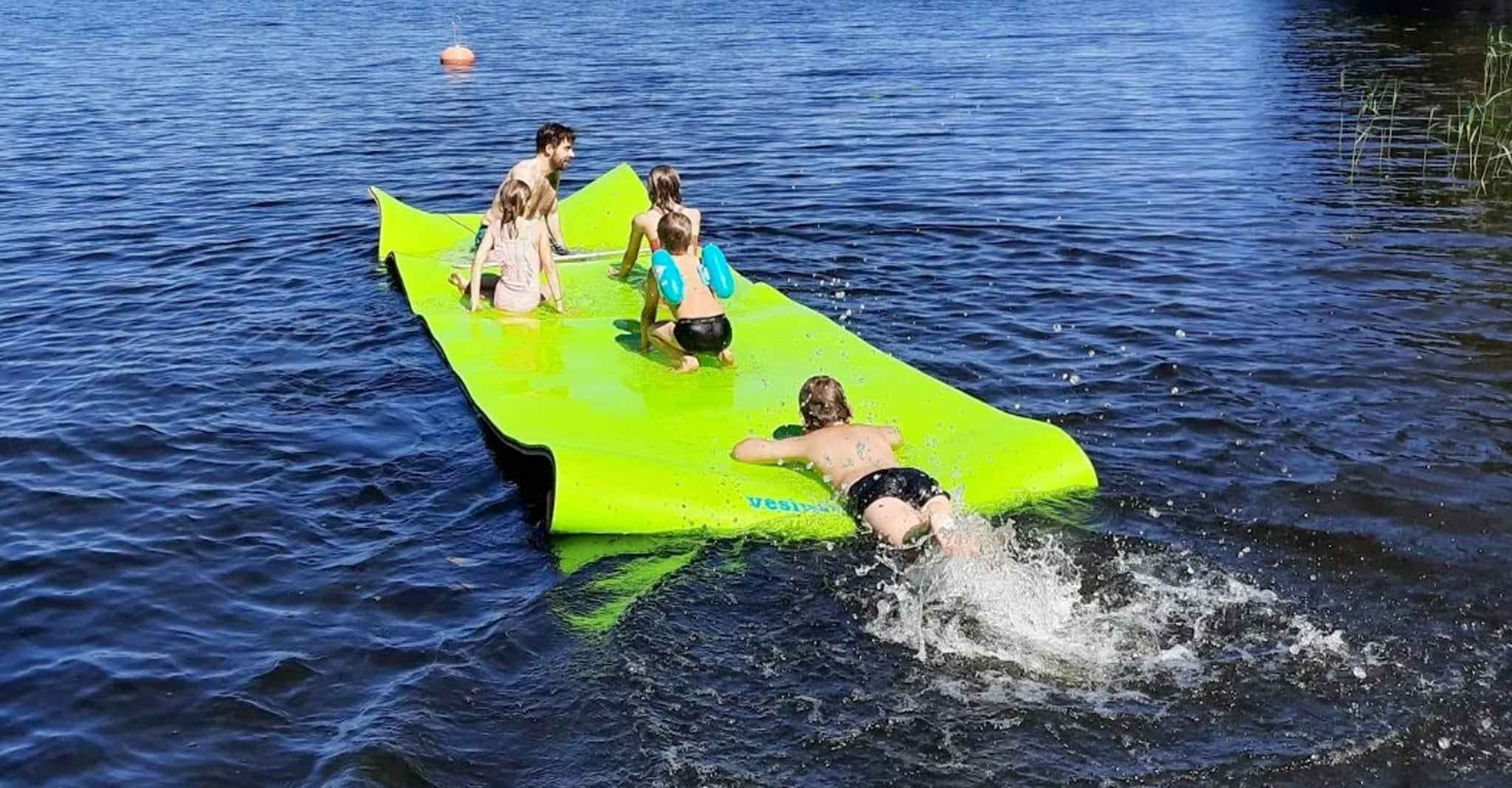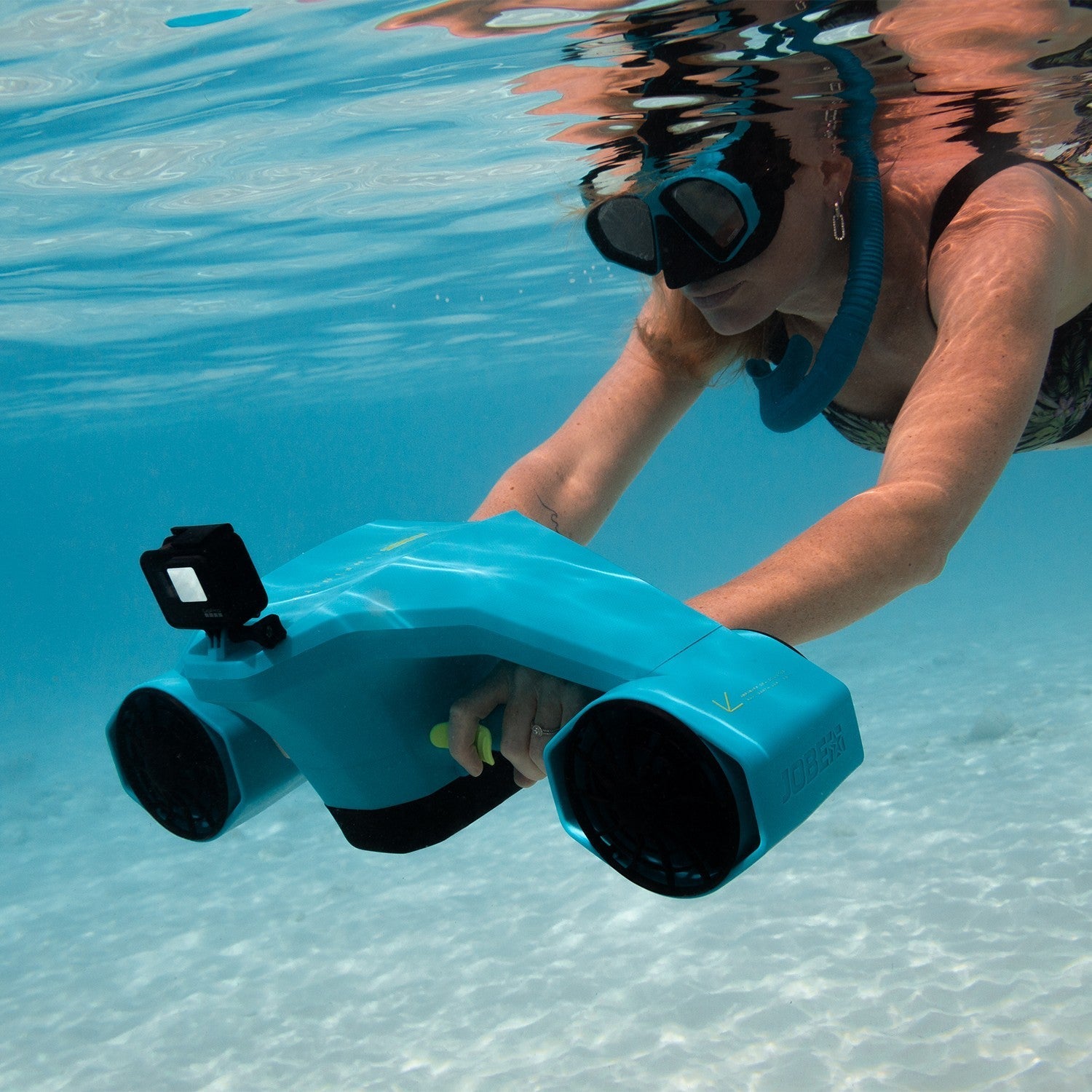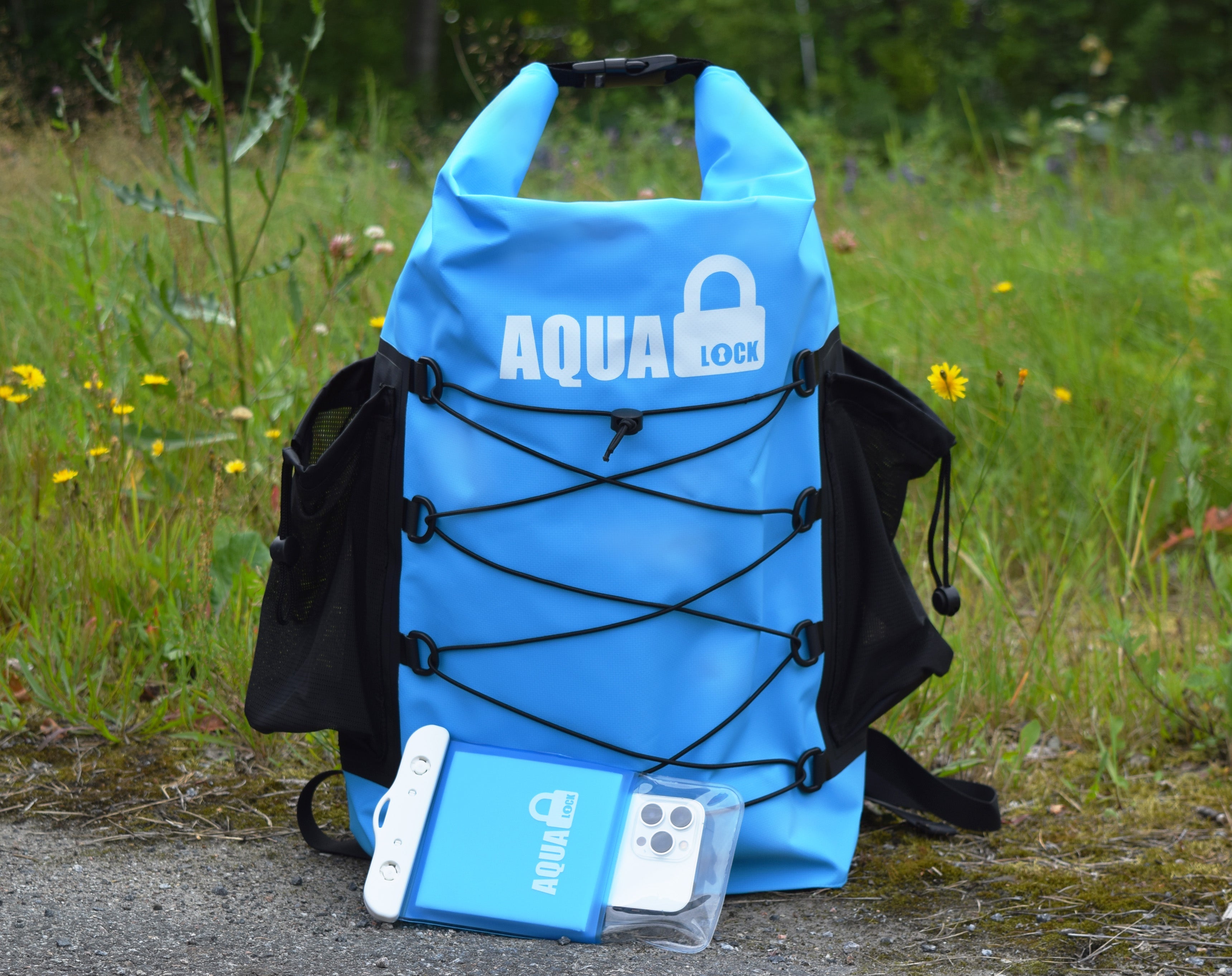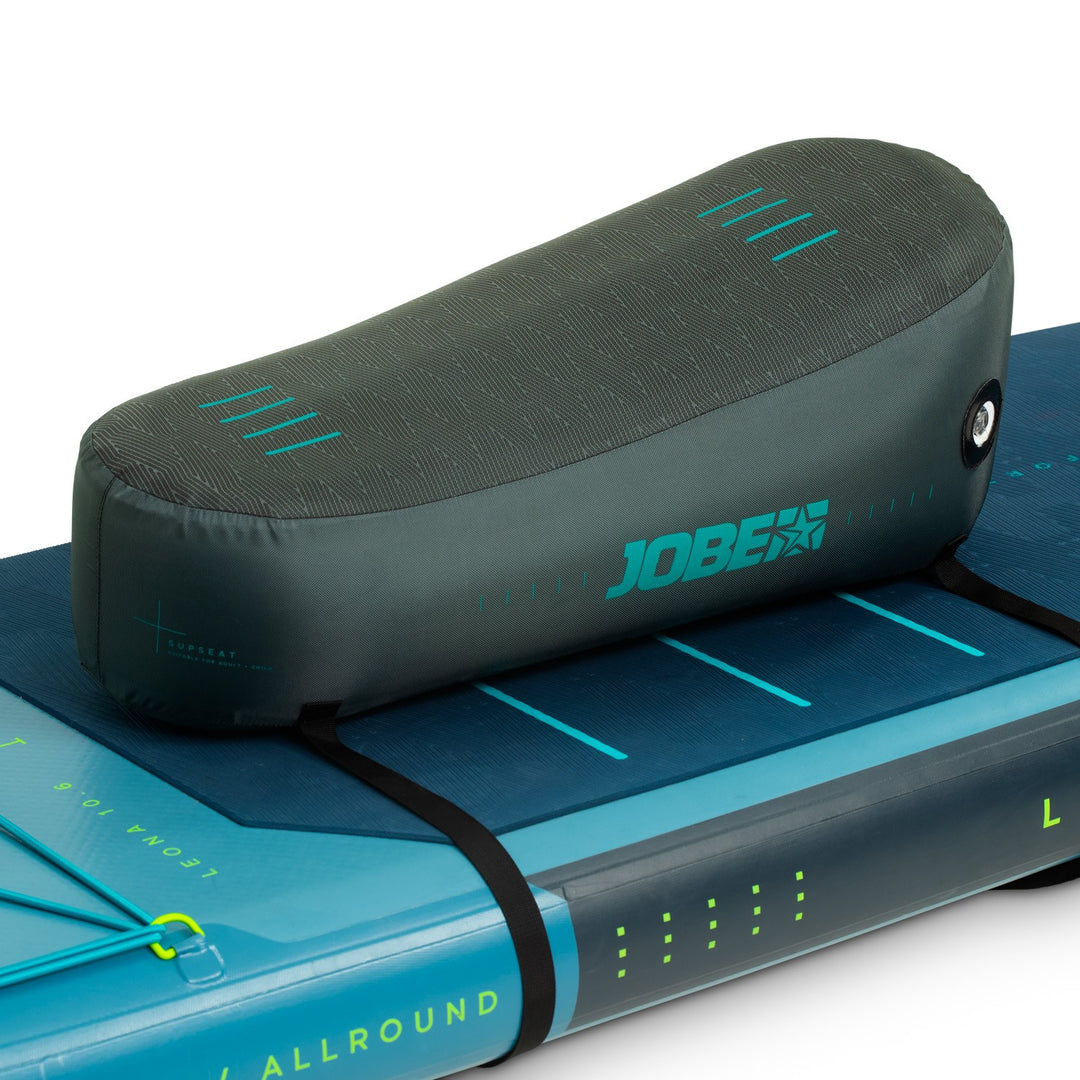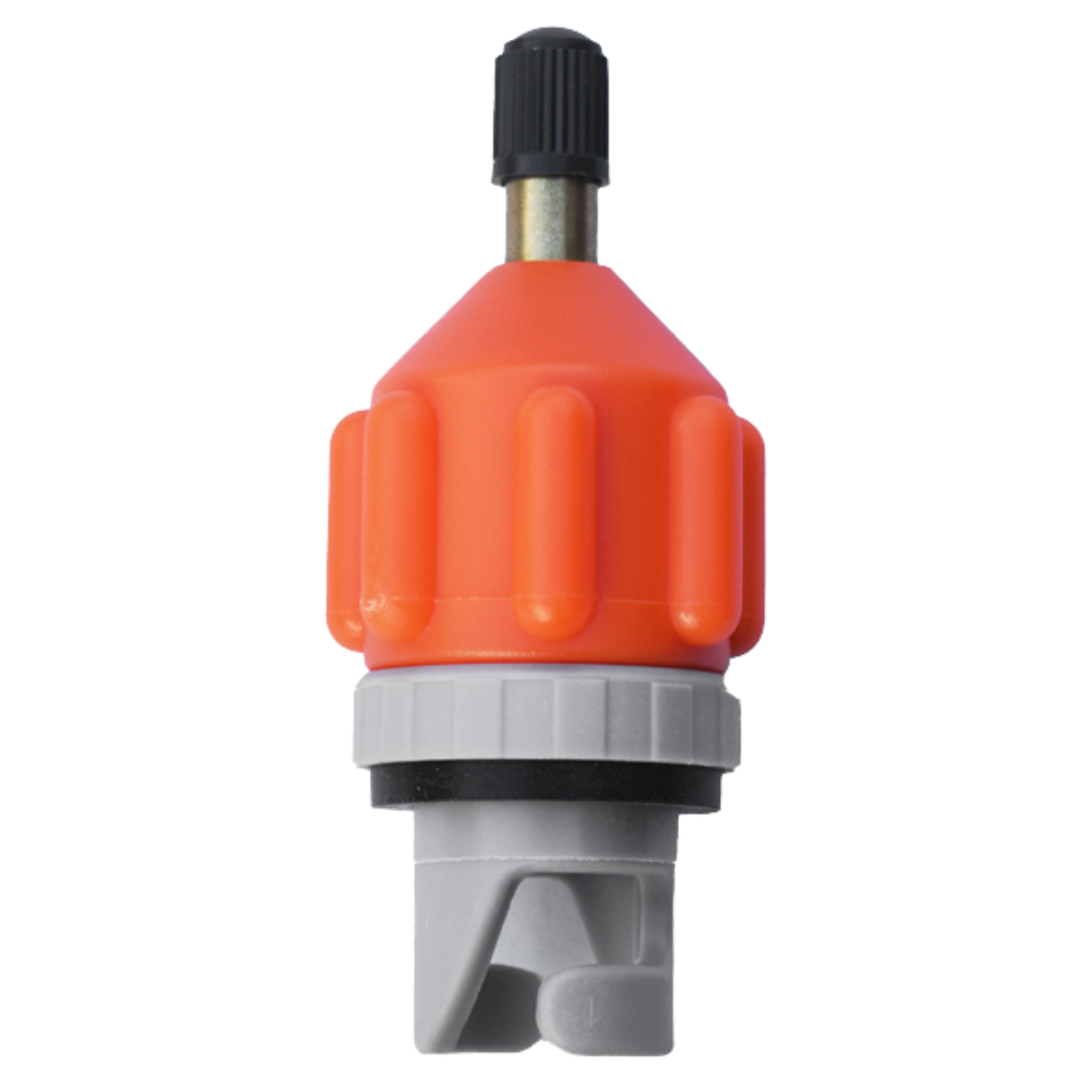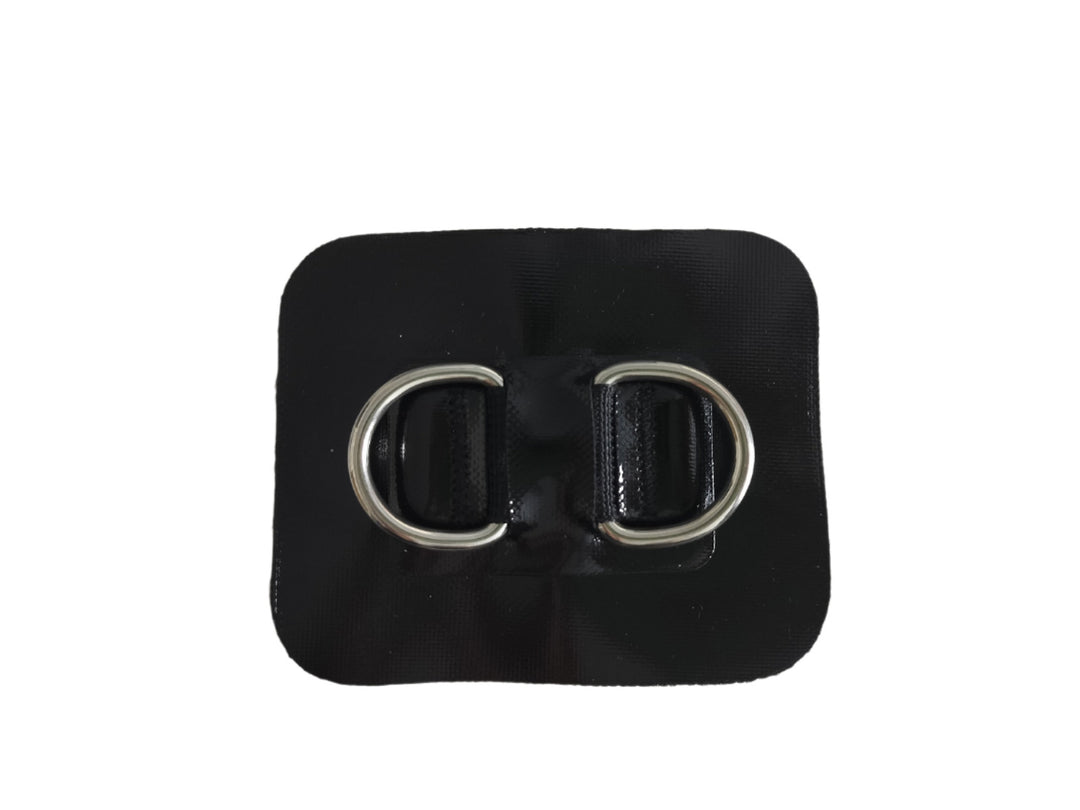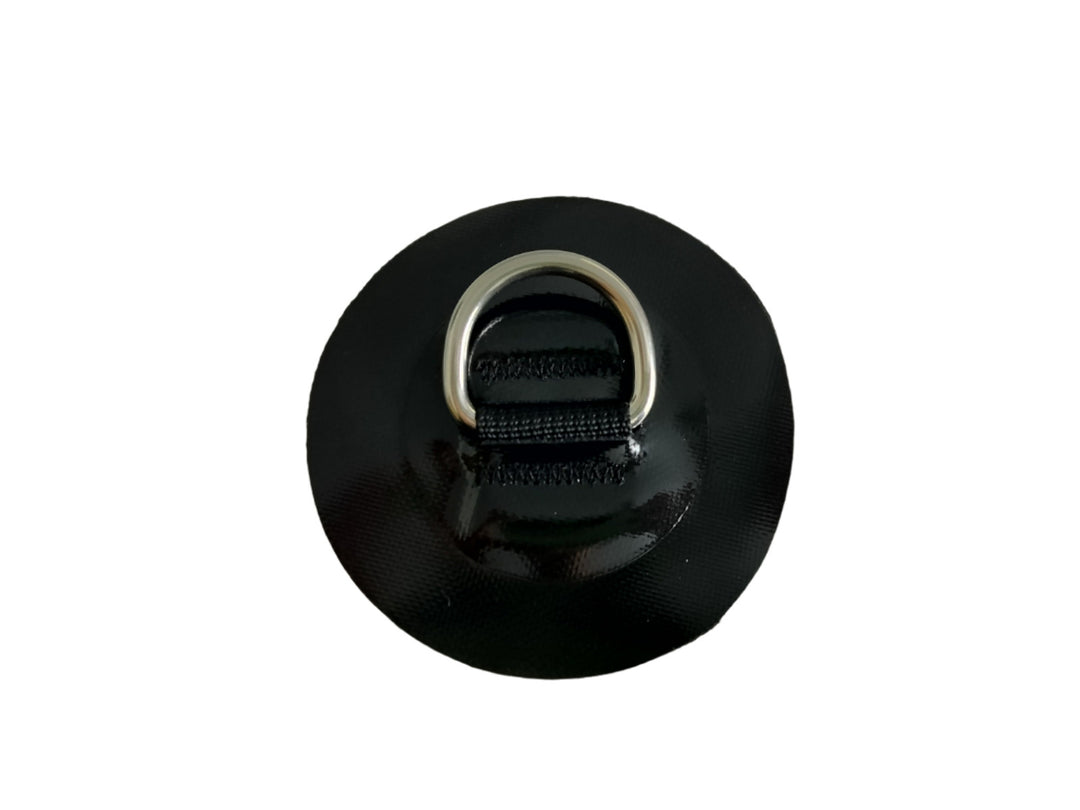storage of sup-boards
An inflatable SUP board can be stored either inflated or deflated and rolled up. Many paddlers keep their board inflated throughout the summer so it’s always ready for use. If you choose this method, it’s a good idea to check the pressure every couple of weeks, especially before longer paddling trips.
To keep your board in great condition for years, protect it from direct sunlight whenever possible — even if it’s made from UV-protected PVC. Constant exposure to the sun will eventually cause the colors to fade and the material to age.
If you’re storing your board deflated in a backpack for a longer period, make sure it’s completely dry to prevent mold growth. Pay special attention to the carrying handle, as its neoprene surface can retain moisture.
Manufacturers state that SUP boards can be stored in freezing temperatures, but if possible, it’s better to keep the board in a mild, above-freezing environment. If winter storage outdoors is unavoidable, keep the board slightly inflated (around 10 PSI). Keep in mind, however, that repeated freezing and thawing cycles can stress the material — a board stored for years in warm, dry conditions will always stay in better shape than one kept in the cold.
For hard SUP boards, the same general care principles apply. Pay particular attention to sunlight and heat, as excessive exposure can cause the fiberglass layer to separate from the EPS foam core (a process known as delamination). This type of heat damage is not covered by warranty, as storage instructions always recommend keeping the board out of direct sun.
During paddling, this isn’t an issue because the water naturally cools the board. Jobe hard SUP boards feature an automatic pressure-release valve on the deck, which allows excess heat-induced pressure to escape. Occasionally, you may notice a bit of water collecting near the valve during use — this is completely normal. The valve is equipped with a Gore-Tex membrane that lets air out but prevents water from entering, ensuring your board stays sealed and safe.

SUP board maintenance
Both inflatable and rigid SUP boards are very easy to maintain. The most important step is to clean your board periodically with a mild detergent solution and a soft brush to remove dirt, sand, and salt residue. If you paddle in salt water, always rinse the board and equipment thoroughly with fresh water afterward to prevent corrosion and material wear.
For inflatable SUP boards, it’s a good idea to check the air valve regularly to ensure it’s clean and free of debris. This helps maintain a proper seal and prevents slow leaks.
You might expect that Jobe’s hard bamboo SUP boards would require extra care, but that’s not the case. The bamboo veneer is protected by a fiberglass layer, which makes it durable and low-maintenance — simply cleaning the surface regularly is all that’s needed to keep it looking and performing great.
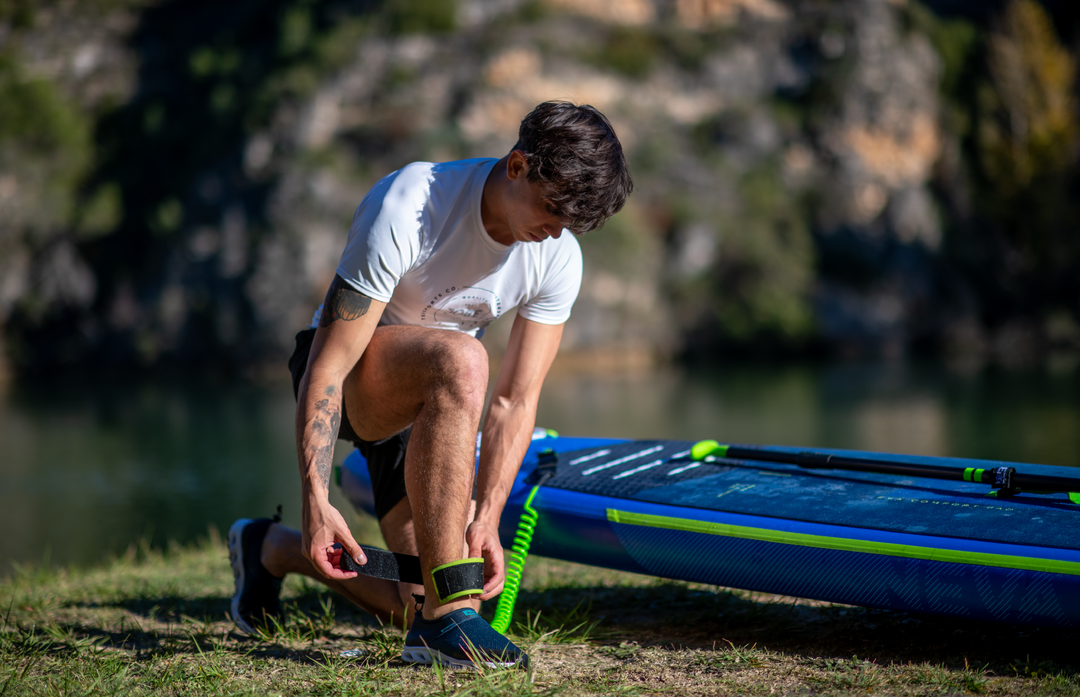
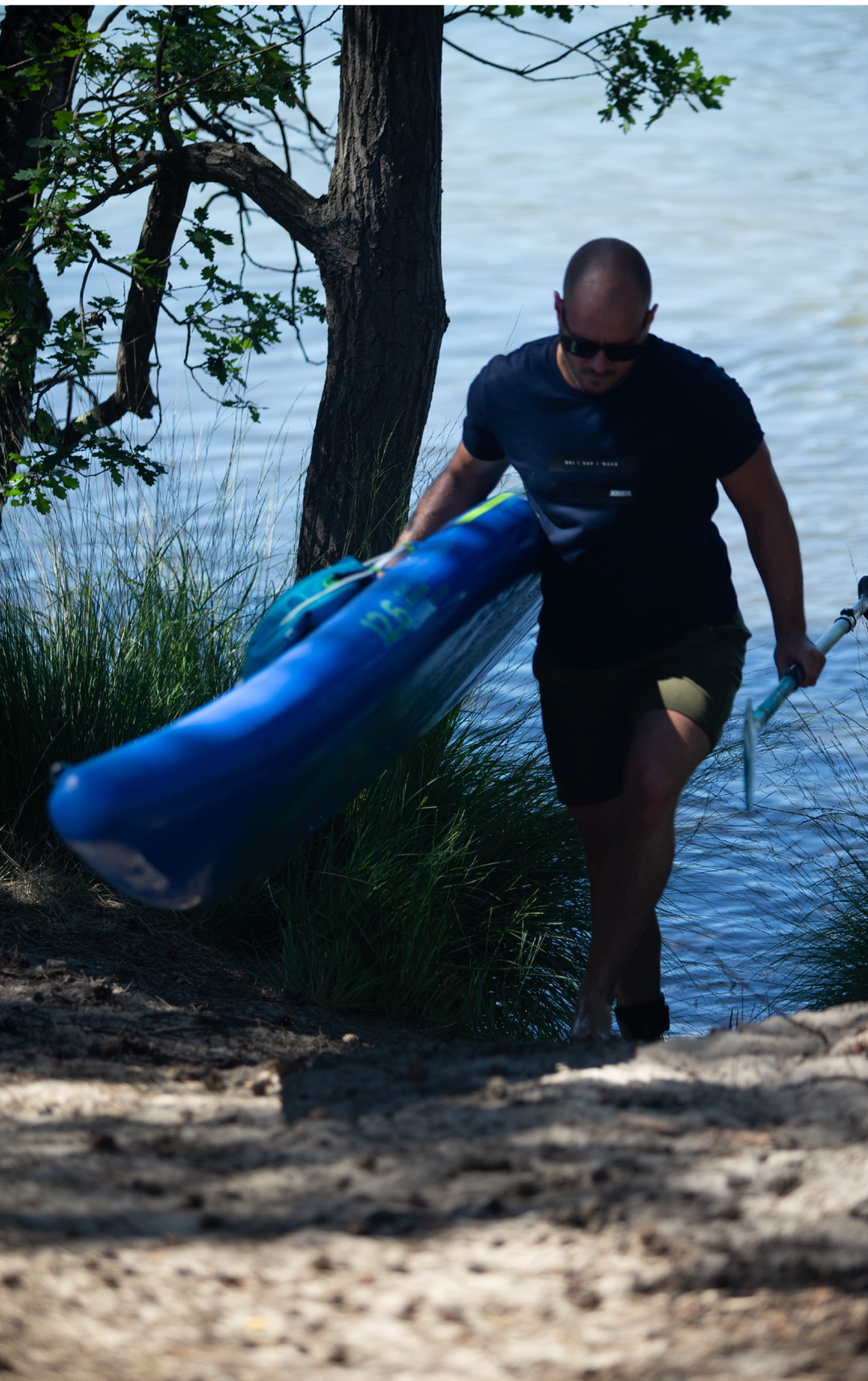
Repairing an inflatable SUP board
It’s very difficult to break an inflatable SUP board, especially if it’s a high-quality model made from durable, multi-layer PVC, such as the Saimaa SUP Moon or Jobe Danube. In over ten years of testing and use, Vesiurheilu.fi has never broken a single SUP board on the water, even in demanding conditions and long-distance paddling.
Most damage occurs from careless handling on dry land — for example, stepping on the board while it’s on a pier with a hidden screw or nail underneath, or setting it down on a rocky shore with sharp branches or stones. To avoid this, never walk or stand on your board on dry land.
If your SUP board does get a puncture, it’s easy to repair. Start by inflating the board and listening for escaping air. If the hole is too small to hear, apply soapy water to the surface and look for bubbles forming — this will reveal the leak. Most often, leaks occur around the valve. If that’s the case, tightening the valve with the included valve wrench (the grey plastic tool usually stored in the orange repair kit tube) is usually enough to fix the problem. Occasionally, even a new board may leak slightly if the valve wasn’t fully tightened at the factory. If the valve itself is faulty, replacement valves are available as spare parts.
If the leak isn’t near the valve, inspect the seams, then the bottom and deck of the board. Once you’ve found the puncture, deflate the board and clean the area thoroughly.
All SUP boards come with a repair kit, which includes PVC patches and adhesive. Apply glue to both the patch and the damaged area, then carefully position the patch over the hole. If trimming the patch, make sure it extends at least 3 cm beyond the hole on all sides. Press firmly from the center outward to remove air bubbles, and let the repair cure for 24 hours before inflating again.
For larger damages (for example, a tear longer than 10 cm), it’s best to have the repair done professionally. In Finland, for example, Selboat Oy specializes in repairing SUP boards and other plastic watercraft in the Greater Helsinki area.
SUP board valve replacement
If the valve mechanism is broken, it can be replaced. Using the grey, hard-looking valve tool supplied with the board, unscrew the valve. Note that the counterpart of the valve is inside the board, so press the counterpart through the bottom of the board against the substrate and unscrew the valve. Do not lose the valve counterpiece in the recesses of the board! It can be difficult to fish it back into place because the inside of the board is full of dropstitch wire. Once you have the male half of the valve in your hand, check at this stage that the cause of the valve's malfunction is not debris, dropstitch wire, sand or similar in the valve threads/reverse threads, and you can save yourself the trouble of buying a valve.
Insert a new valve in the opposite thread and make sure that no wire is left between the valve threads or between the valve and the PVC plastic of the board. If this doesn't work, you can cut a few wires near the valve - this won't weaken your board. Tighten the top of the valve by twisting clockwise and simultaneously pressing the board against the substrate to prevent the counterpart inside the board from rotating with it.
Repairing SUPs with arms
If you have driven your bamboo board on a rock or managed by some miracle to get Titan board a dent that has broken the coating so deeply that the EPS (polystyrene) foam on the board gets wet, the board should be repaired immediately to prevent the EPS foam from leaking. First, allow the dent and the EPS foam to dry, then clean the broken area. The repair can be done with a water-resistant two-component epoxy, for example Loctite's power epoxy is an inexpensive adhesive for less than a tenner and is neat to use. Mix the ingredients together and brush over the dent. You can also use the epoxy to fill small dents, as it hardens really hard and then the board is ready to use again. If your board has a big damage, we recommend you take it to a local professional, for example fibreglass boat repairers can usually repair SUP boards.
These guidelines are freely available in online publications if you link to the source www.vesiurheilu.fi More information info@vesiurheilu.fi
